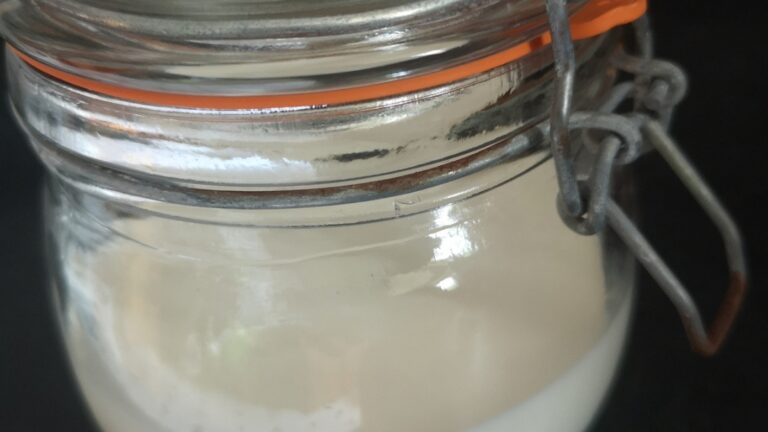Hello,
I was first introduced to kefir back in 2011… and man, do I wish I had kept it in my diet back then… I often wonder if I had paid more attention back then, would I not have crohn’s now? But, that’s not something I know (unless anyone knows how to transport into alternative universes???).
Hindsight is a wonderful thing!
Back then, I had no health issues that caused me real concern… I was what we identify as ‘fit and healthy’, maybe not with the healthiest of habits – l taught classes early in the morning and worked and ate late at night. Also I liked to party at the weekend, and sometime that weekend started on a Wednesday and ended on a Tuesday… so sleep and rest wasn’t a priority… And oh, my poor liver!!!
Anyway, I am older, wiser, sober, and much more dedicated to my real, true health… Funny how that happens when we are presented with the reality of our mortality…
The last couple of weeks I have shared with you about my ferments that I have been adding in and this week its the very simple kefir.
Since adding kefir to my daily food intake, I very quickly noticed an improvement in my bowel movements.
Kefir is truly a gut health, microbiome-restoring superfood!
Milk Kefir is fermented milk that is a phenomenal probiotic. You can’t replicate the diversity or bio-availability in a supplement. Shop-bought is fine and convenient but, as with everything, homemade is best.

To make it you need kefir grains (anyone that already makes it will have an abundance of them because they double every time you make a new batch). Nature’s way of keeping on giving.
To start, you need a teaspoon of the grains
½ cup Cows milk (preferably organic) – you can use whole fat, semi-skimmed or skimmed, it’s up to you. The microbes from the kefir are eating the milk sugars anyway. Some lactose-sensitive people find that they can have kefir because the lactose is broken down. – Lactose is the sugar in milk.
However, if you can’t tolerate milk in any way, you can also make it with soy milk, or there is water kefir (which use different grains and you feed them with sweet water) …
You need a glass jar with an air-tight lid, a wooden, plastic or silicone spoon and a plastic or silicone sieve.
It’s not recommended to use metals with the kefir because metals like silver, copper and gold are anti-microbial and can kill of your kefir grains. So better to be safe than sorry and avoid metals.
In your jar, put your kefir grains and milk, put the lid on and leave in a cool/dark place for approx 24 hours. Drain off the milk into a fresh jar or bottle (through your sieve) and put your grains into a clean jar for the process to repeat.
I sometimes put my grains in milk in the fridge to slow the process down if I don’t use all the kefir milk in 1 day. As the grains double up over time, I add a bit more milk and it can quickly get out of control. Once you are working with a heaped tablespoon of grains, either pass some on, or freeze the extra so you always have backup. The more grains, the stronger your kefir will get.
The longer you leave it, you can leave it 48 hours the stronger it will get. When it’s getting stronger, it has a better microbes profile! You will over time work out what strength works for you.
When it comes to using it, start with a tablespoon and over the days build up until you are having maybe half a cup.
I mix it with my breakfast yogurt and fruit. Some people add it to smoothies, some drink it as it is. Whatever you do, don’t heat it – that will kill off the bacteria.
